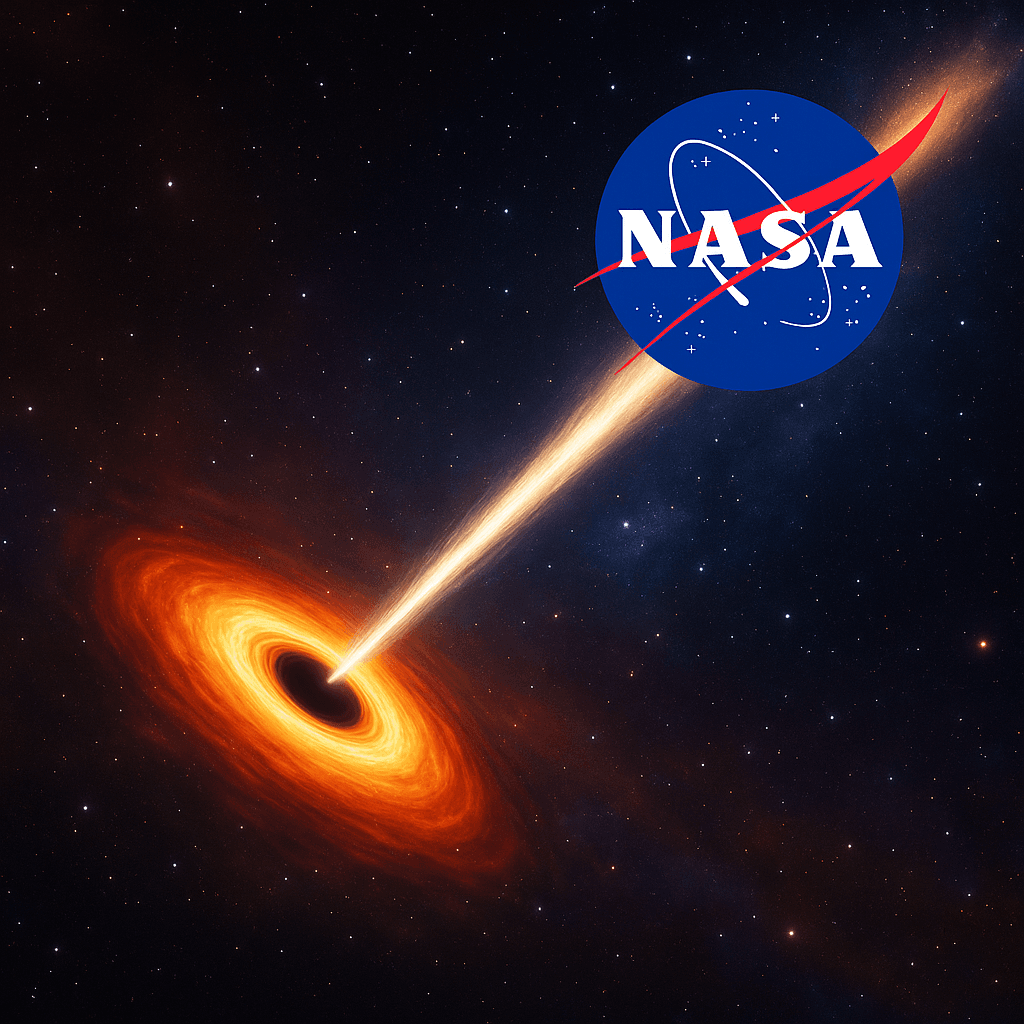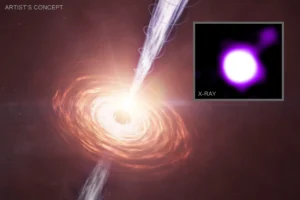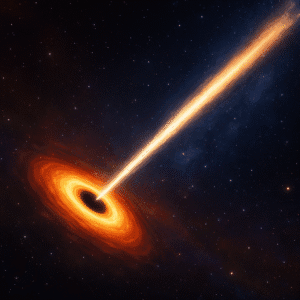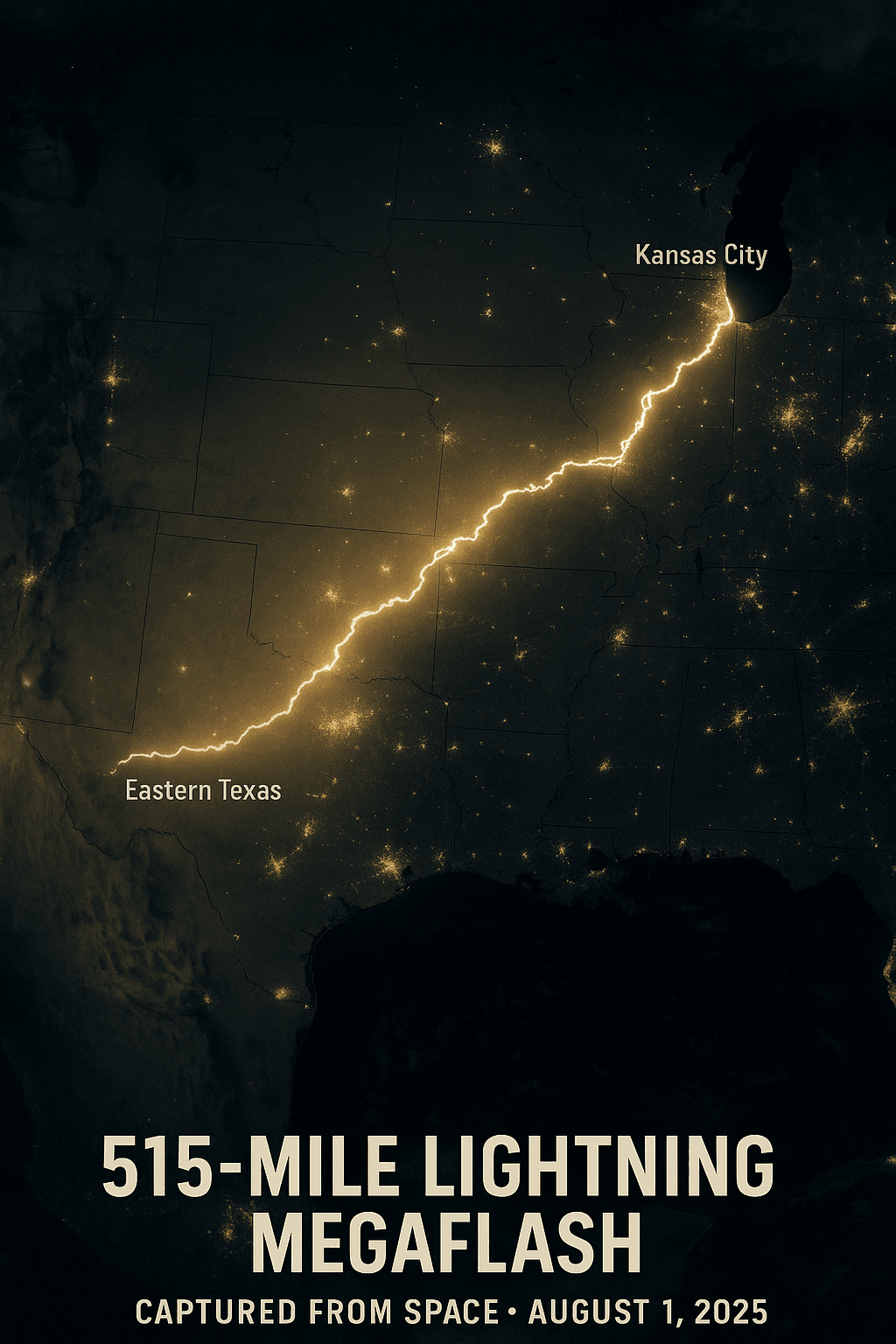
Forget quiet, dark voids. NASA’s Chandra X-ray Observatory has just captured something spectacular: supermassive black holes in the distant universe blasting out jets of energy with unexpected ferocity during a period astronomers call “cosmic noon.” This discovery, challenging our understanding of how these cosmic engines operated in the universe’s youth, reveals jets interacting spectacularly with the afterglow of the Big Bang itself.

Setting the Scene: What is “Cosmic Noon”?
Imagine the universe roughly 3 billion years old – a bustling, formative era known as cosmic noon. Galaxies were forming stars at breakneck speeds, and the supermassive black holes at their hearts were feasting on surrounding gas and dust, growing faster than at any other time in cosmic history. It was a period of intense, universal construction.
NASA’s Chandra Sees Surprisingly Strong Black Hole Jet at Cosmic “Noon”
The Discovery: Behemoth Jets Illuminated by Primordial Light
A team of astronomers, led by Jaya Maithil of the Center for Astrophysics | Harvard & Smithsonian, pointed NASA’s Chandra X-ray Observatory and the Karl G. Jansky Very Large Array (VLA) towards two incredibly distant quasars – the ultra-bright cores of galaxies powered by voracious supermassive black holes. These quasars, named J1405+0415 and J1610+1811, reside a staggering 11.6 billion and 11.7 billion light-years away, respectively. We’re seeing them as they were when the universe was in its cosmic noon prime.

What Chandra detected was astonishing: powerful relativistic jets stretching over 300,000 light-years long emanating from each black hole. But the real surprise was their sheer intensity, especially for J1610+1811. Its jet carries roughly half the energy emitted by the incredibly hot gas swirling into the black hole itself – an unprecedented ratio for jets observed at this distance.
The Cosmic Spotlight: How Chandra Saw the Invisible
Detecting these faint jets across such vast distances, especially when they are close to the blinding light of their quasars, is a monumental challenge. Chandra’s exceptional sharp X-ray vision was crucial. But nature provided an even more critical assist: the Cosmic Microwave Background (CMB).
The CMB is the faint, ubiquitous leftover radiation from the Big Bang, bathing the entire universe. Back during cosmic noon, when these jets were active, this background radiation was much denser and hotter than it is today. As electrons within the jets screamed away from their black holes at near-light speeds (95-99% of light speed for J1405+0415; 92-98% for J1610+1811), they collided head-on with these microwave photons.
Think of it like hailstones hitting a speeding windshield. These collisions boosted the low-energy microwave photons way up in energy, transforming them into high-energy X-rays. Chandra, uniquely positioned to detect this specific X-ray signature, could then see the jets – effectively using the glow of the Big Bang itself as a cosmic spotlight to illuminate structures that would otherwise be invisible.
Cracking a Cosmic Code: Speed vs. Angle
One of the biggest headaches in studying distant jets has been disentangling their actual power from effects caused by their orientation relative to Earth. Einstein’s special relativity dictates that jets pointed almost directly at us appear dramatically brighter than identical jets pointed sideways or away. A jet aimed away but moving at 99% light speed could look as bright as a slower jet aimed right at us. This made it incredibly hard to know if a jet was truly powerful or just favorably aligned.
The research team, presenting their findings at the 246th meeting of the American Astronomical Society and publishing in The Astrophysical Journal, developed a novel statistical method to solve this puzzle. They recognized a fundamental bias: our telescopes are much more likely to detect jets pointed towards Earth because the relativistic “beaming” effect makes them shine brightest.
Their method incorporated this bias using a modified probability distribution. They simulated thousands of jets, applying the physics of how jet electrons scatter the CMB and accounting for the fact that jets pointed our way are overrepresented in surveys. By matching this complex model to their actual Chandra and VLA observations, they finally pinned down the most probable viewing angles for these distant giants: about 9 degrees for J1405+0415 and 11 degrees for J1610+1811 – meaning they are angled slightly towards us, but far from being directly in the line of fire. This confirmation solidified that the jets’ power is genuinely intrinsic, not just an illusion of alignment.
Visualizing the Fury: An Artist’s Impression
Imagine a swirling disk of superheated gas and dust, resembling a fiery, tilted dinner plate with concentric orange and yellow rings, feeding a supermassive black hole – a dark sphere outlined in yellow. From its poles erupt two immense beams: one brilliant streak of silver and pale violet shooting towards the upper right; a slightly dimmer counterpart blasting in the opposite direction. These jets are encased in long, spiraling lines, like cosmic corkscrews stretching hundreds of thousands of light-years.
This artist’s illustration captures the scene detected by Chandra. The inset in the image (upper right corner) shows the actual X-ray data: a bright central quasar ringed in purple energy, with the faint, telltale purple streak of the jet extending outwards – the X-ray fingerprint of electrons colliding with the ancient light of the Big Bang.
Why Does This Matter?
The discovery of such surprisingly powerful jets during cosmic noon is significant for several reasons:
Black Hole Growth: It reveals that the processes launching these relativistic jets were highly efficient and energetic even during the peak growth phase of supermassive black holes.
Jet Impact: Such powerful jets inject vast amounts of energy into their surroundings. Understanding their prevalence and power at cosmic noon is crucial for modeling how they influenced the formation of stars and galaxies around them, potentially heating gas or even shutting down star formation.
CMB as a Tool: It brilliantly demonstrates how the evolving Cosmic Microwave Background can be used as a probe to study distant, high-energy phenomena that would otherwise remain hidden.
Relativity in Action: It provides a real-world, extreme test bed for Einstein’s theories of special relativity.
A Window to the Young Universe
Thanks to the unparalleled X-ray vision of NASA’s Chandra Observatory and the ingenuity of astronomers deciphering the data, we’ve glimpsed a violent and energetic episode from the universe’s adolescence. These monster jets, blazing through the dense afterglow of creation, remind us that the cosmos during “cosmic noon” was far more dynamic and extreme than we often imagined. They push the boundaries of what we thought possible for black holes in the early universe and open a new window into understanding how these titanic engines shaped the evolving cosmos. The universe’s noon hour, it seems, was anything but quiet









